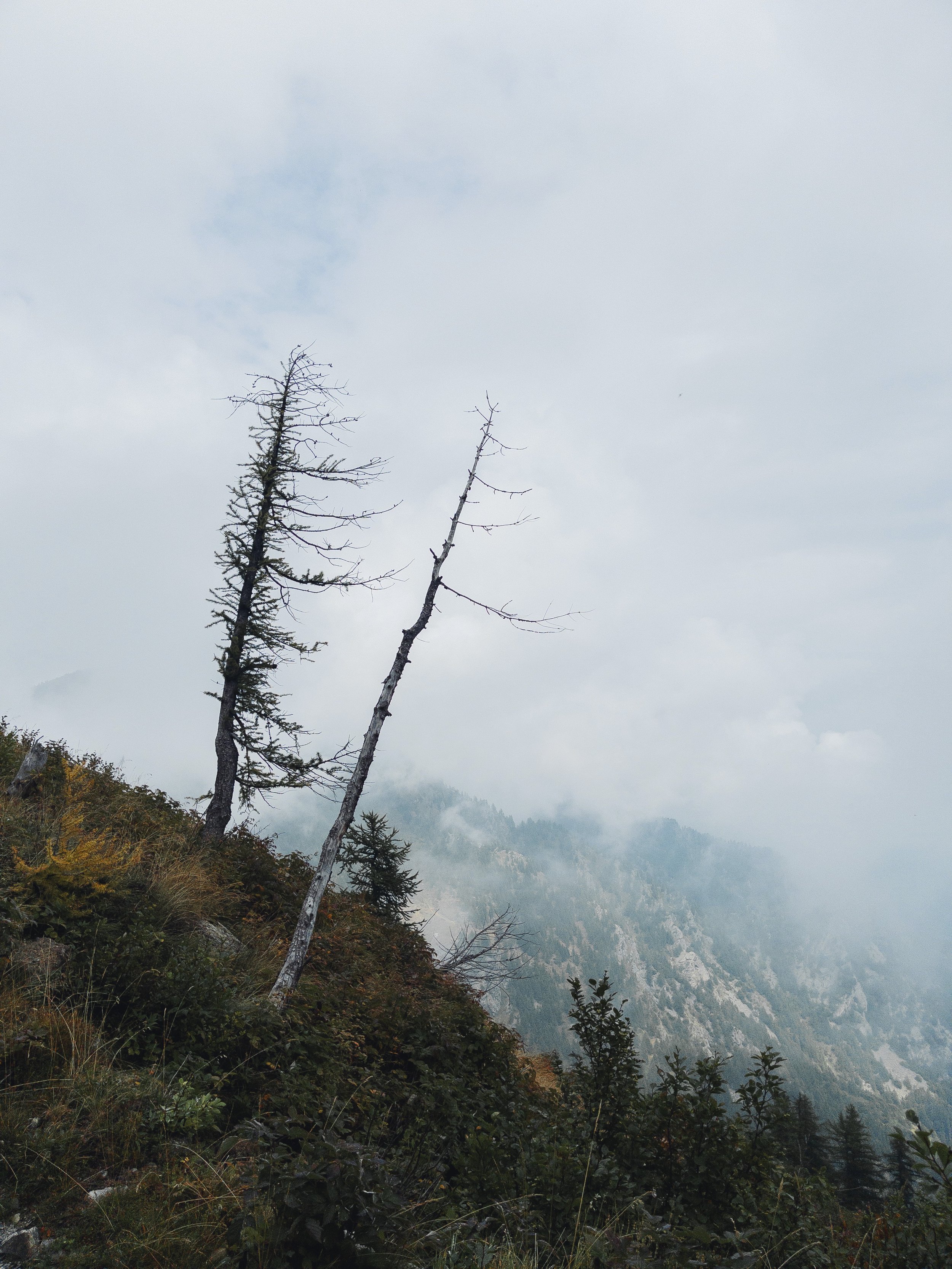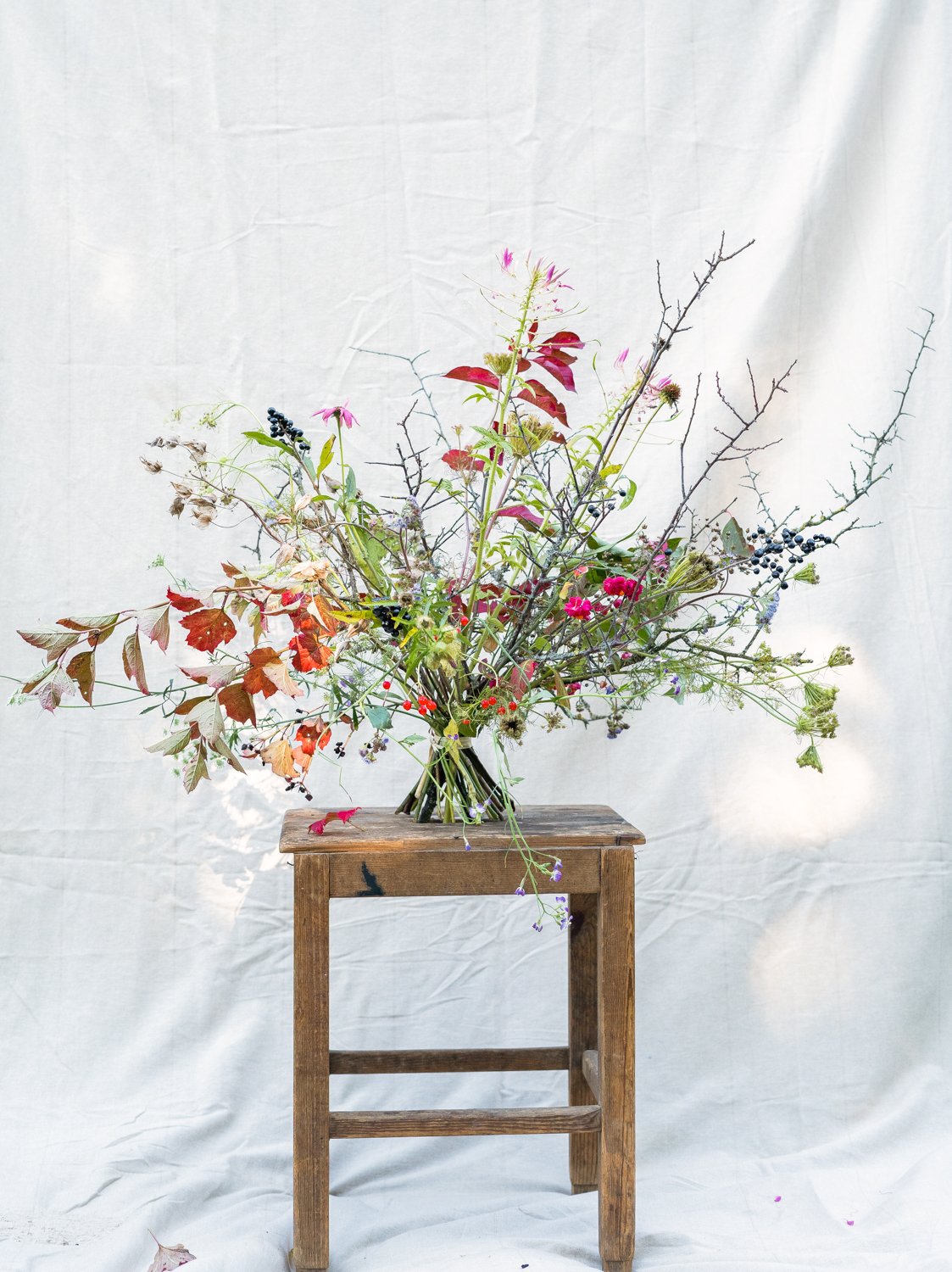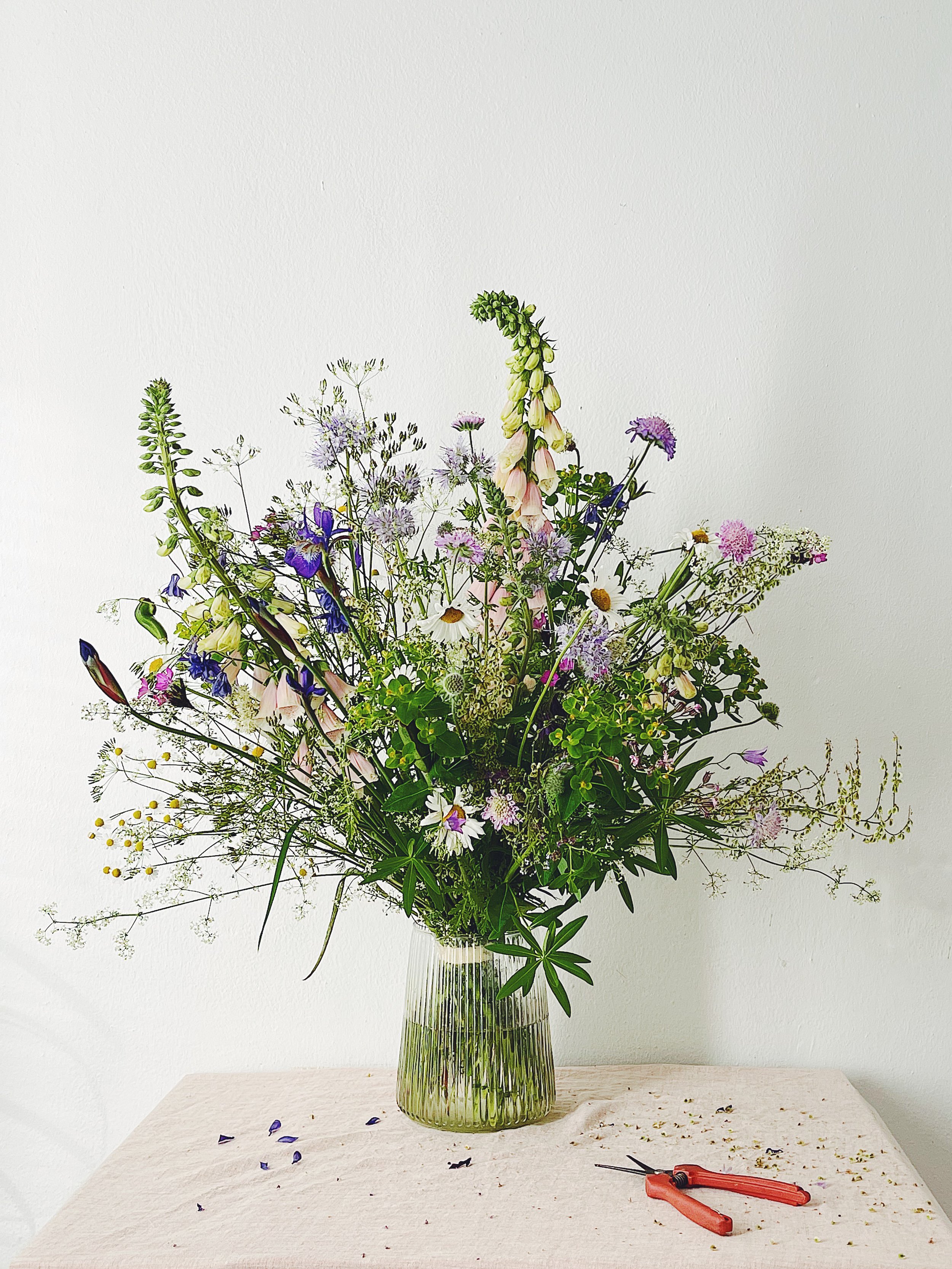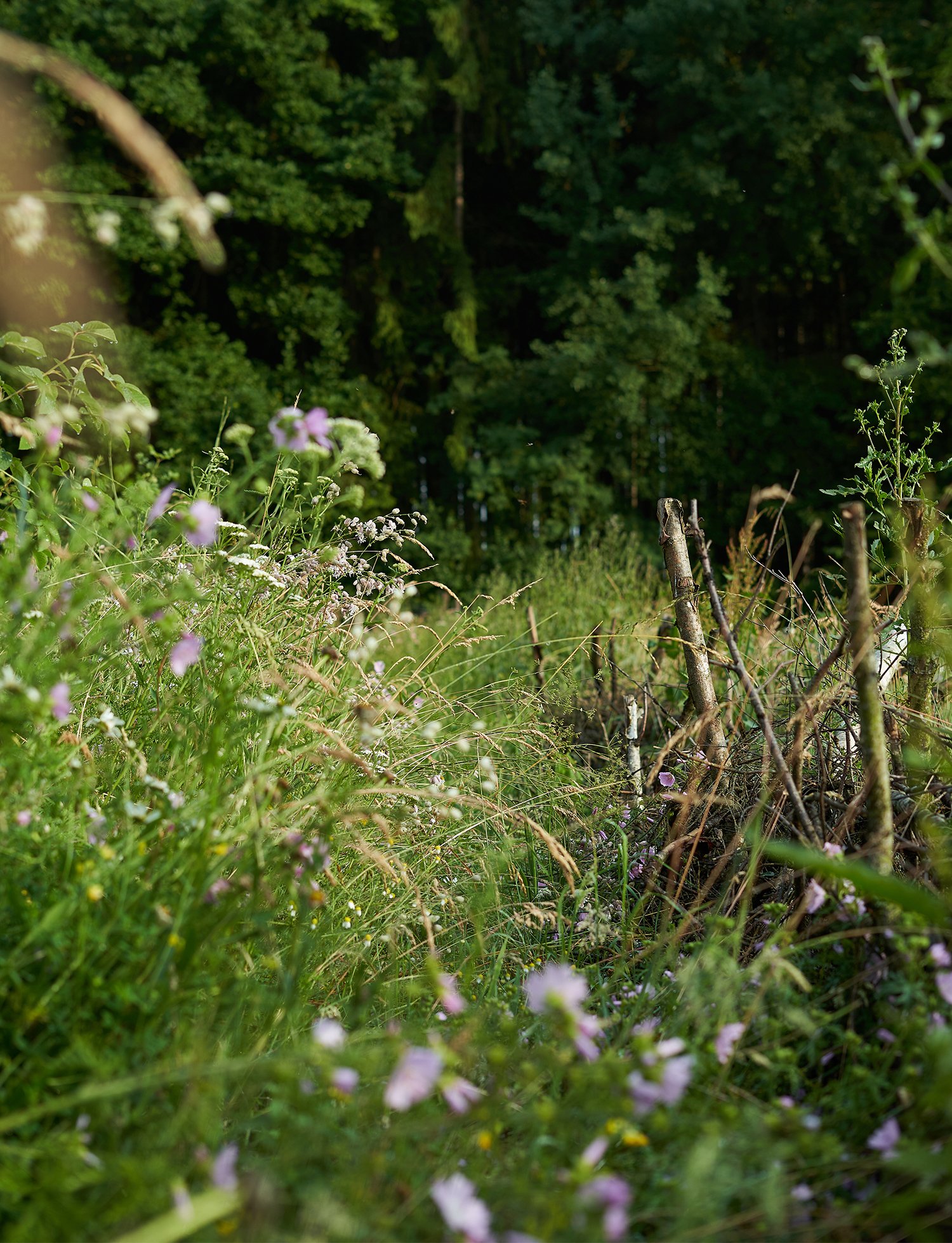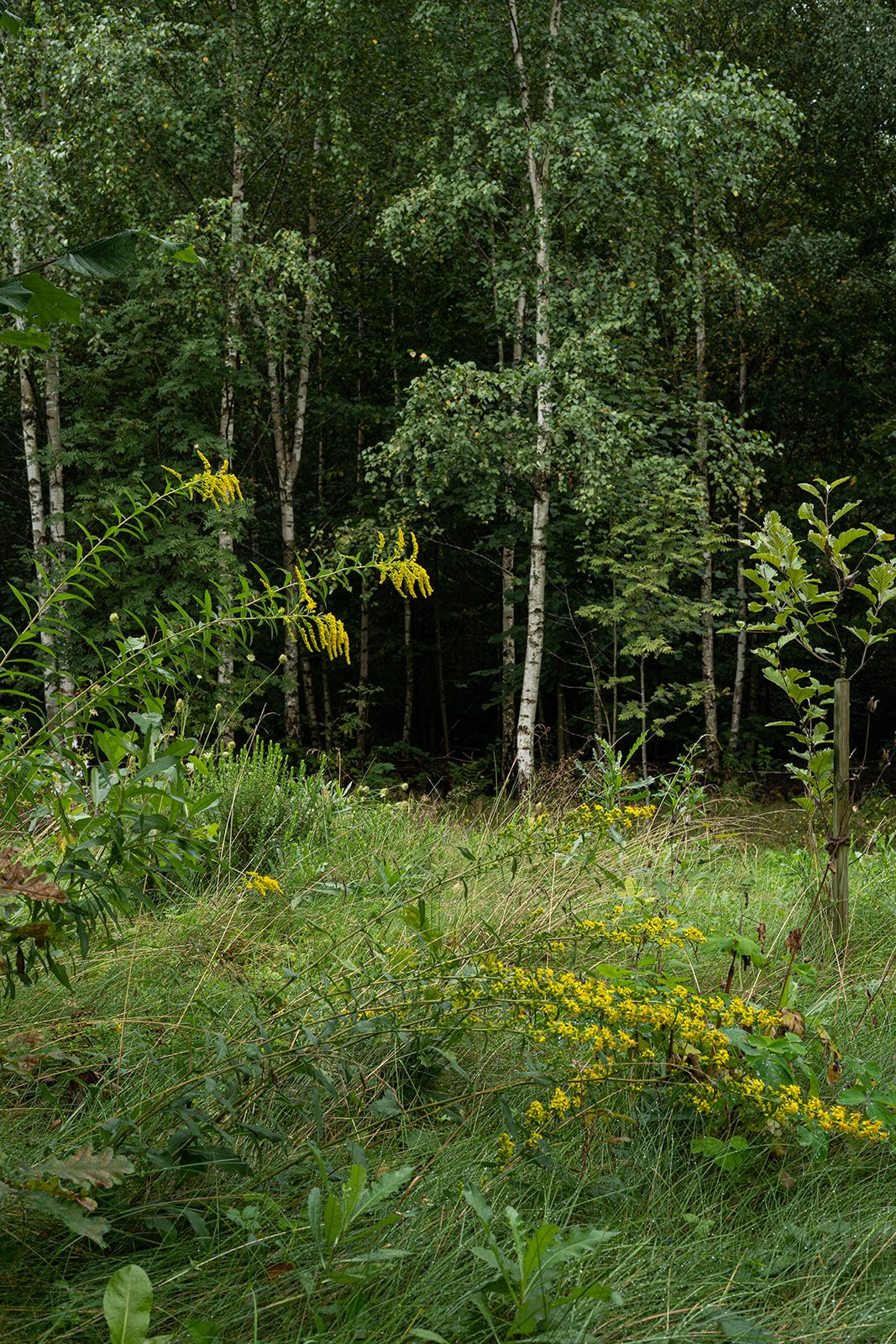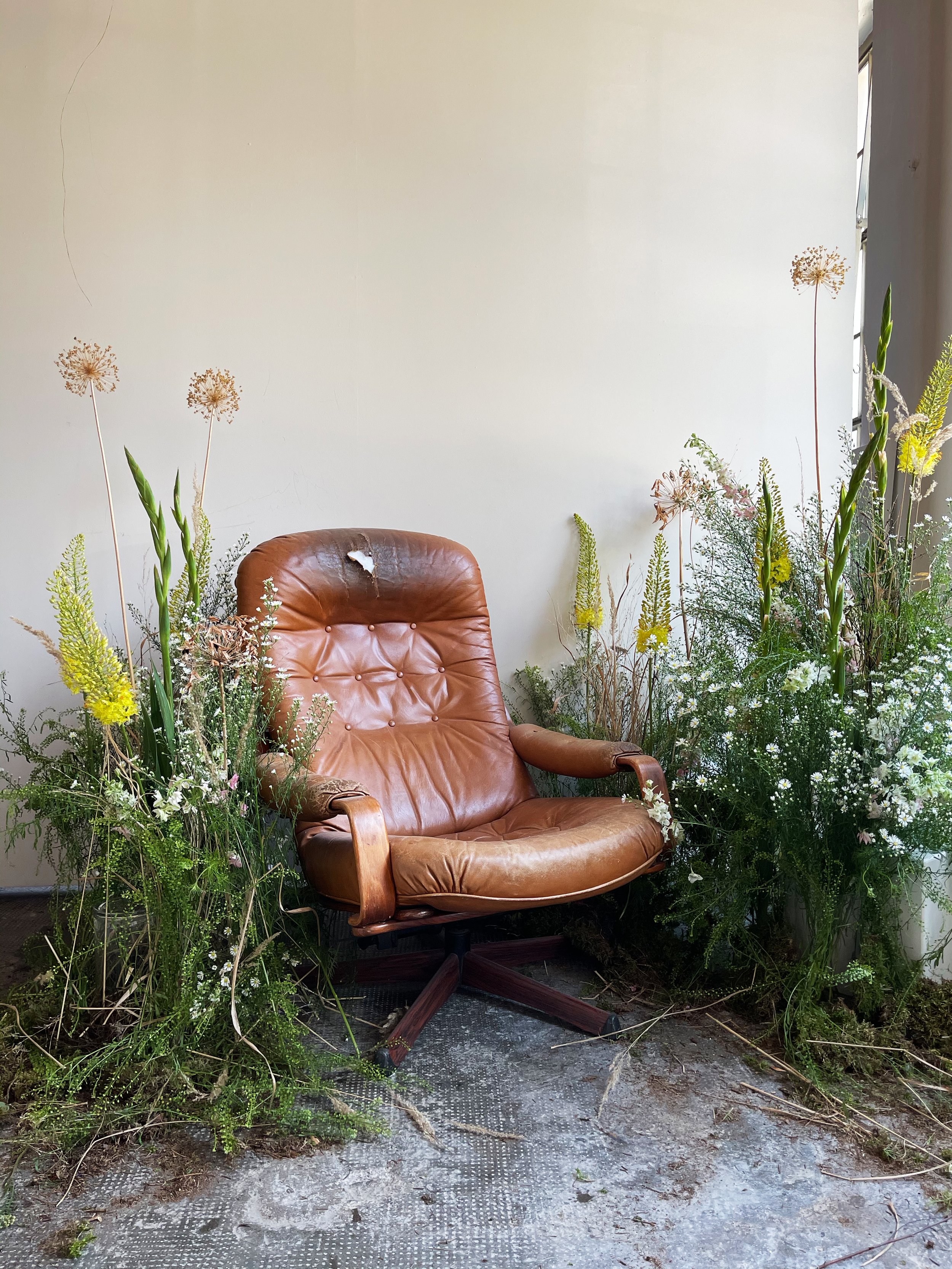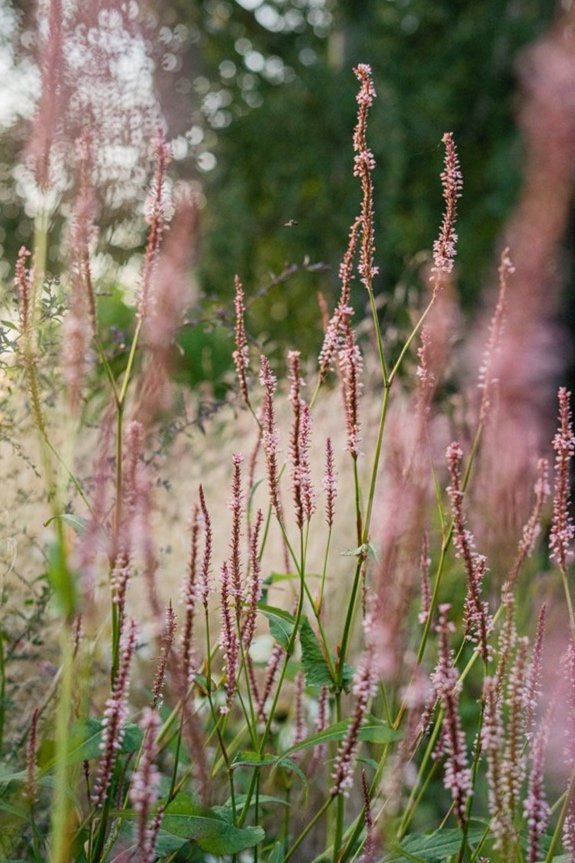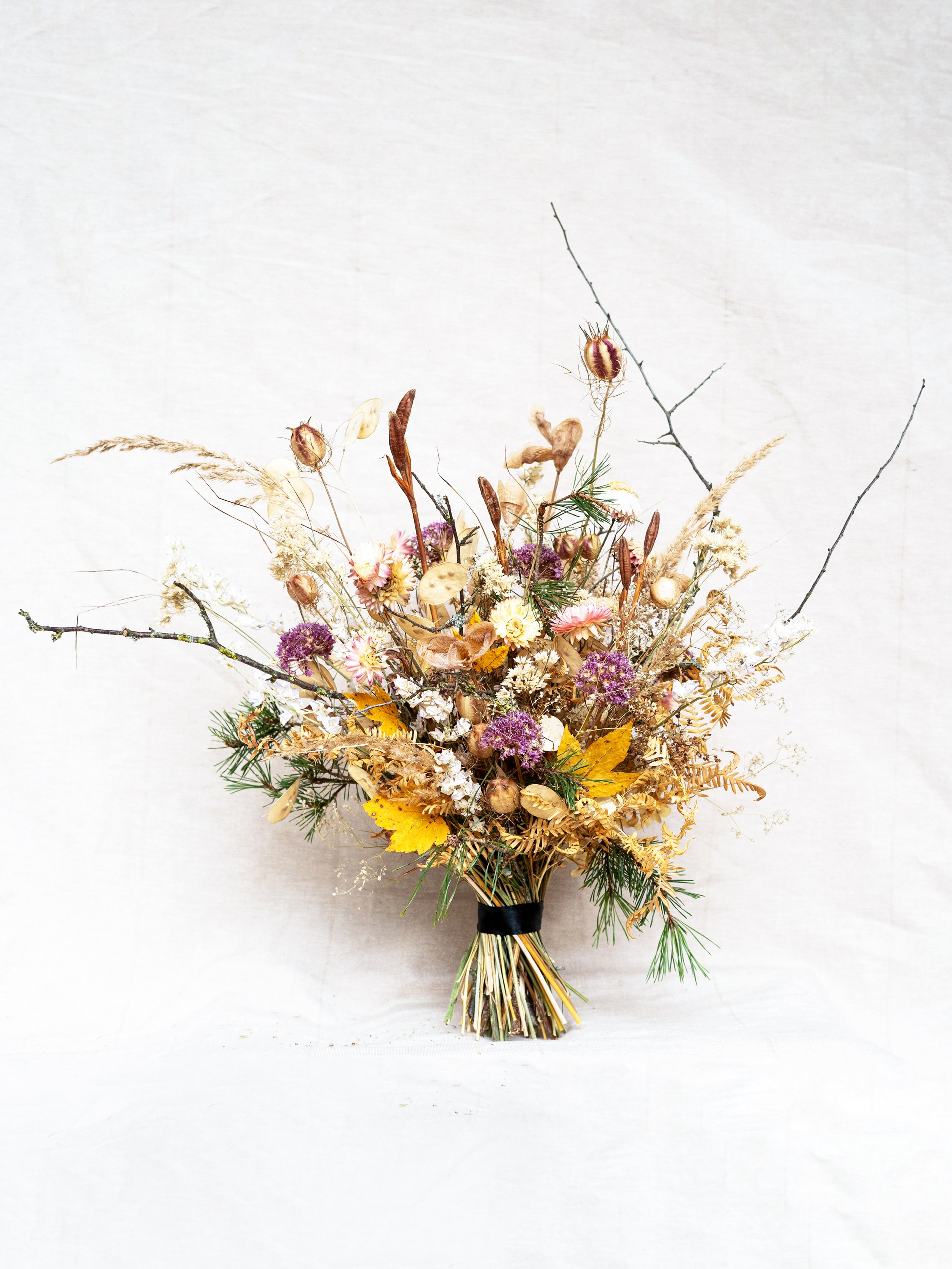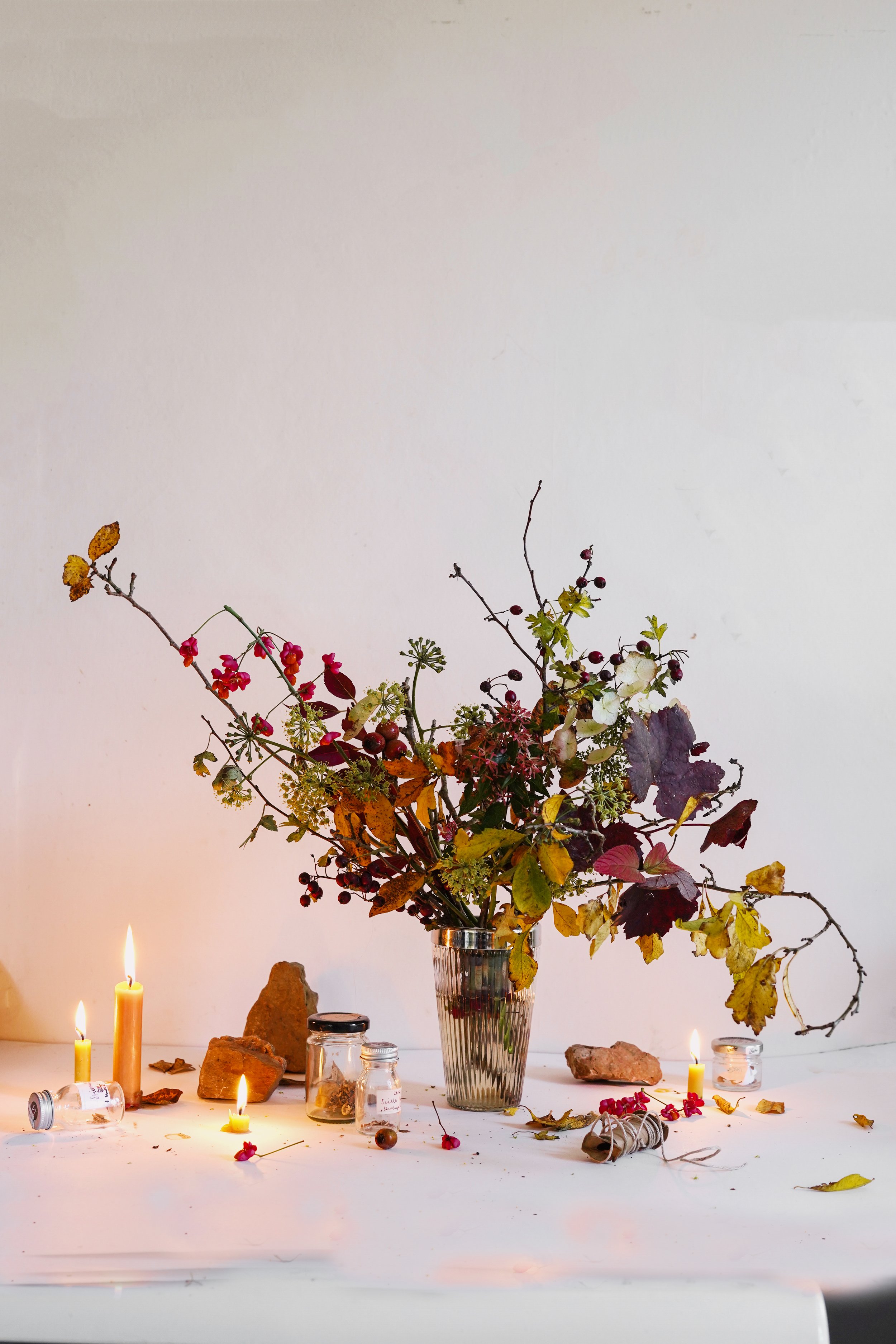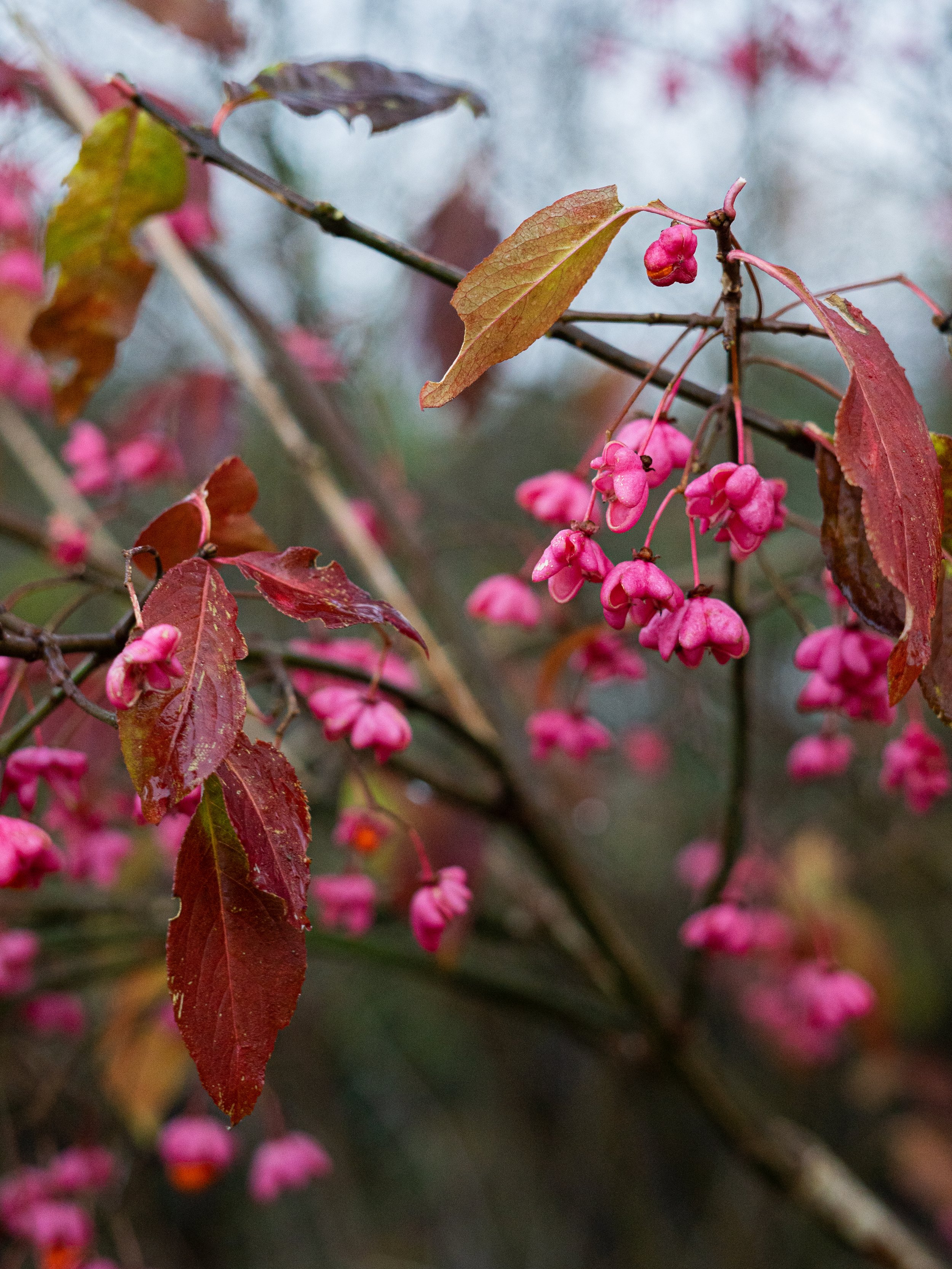Contemporary Floristry : A future-proof approach.
A NEW WAY OF SEEING
In an age where over-consumption and the use of unsustainable resources is a reality — we need to radically shift our mindset, our behaviours and educate ourselves about solutions that are future-proof for the planet that sustains us. That means rethinking how our current methods work in favour for all life on this earth and how to shift from destructive behaviour to a nurturing way of living.
Being an eco-conscious and a slow-flower florist I believe it is vital to bring awareness and make shifts within the floral industry through our own contributions and practises. In my case through the studio Haute Jardin, through workshops and lectures and also cultivate the ever evolving knowledge and creativity in finding new ways to practise.
Sustainabitly as defined by Pope et al. (2004) and Purvis et al. (2019) is resting on three distinct pillars:
Social, Economic and Enviormental. Even though they have been widely known they aren’t often implemented in our current methods and ways regarding the cultivation of flowers and the practises used in floral design,
Contemporary Floristry, as I am defining it, means to completely discard materials and practises that are not aligned with natural ways of living such as the use of harmful and non-degradable floral foam, chemically bleached and altered flowers as well as avoiding the use of mass-produced cut flowers and wasteful processes. It further means to be aware of how flowers are produced and also who is involved in the whole process: from seed to flower to design.
THE ROMANTIC ILLUSION
It is easy to believe the romantic and colourful bouquets of flowers you are buying to gift to your loved ones are natural, garden-like and wild. Labels are often using green-washing to make you believe you are buying something else than mass-produced flowers.
With an annual turnaround of 3 billion euros the german flower industry, as it is, is one of the largest in Europe: It is not surprising because almost all flowers, that are available any day of the year and that are used by flower shops and florists in Germany are imported: Some from neighbouring countries such as Holland. Others come from Columbia, Israel, Kenya, Turkey, Ecuador and many others. Many familiar faces are amongst them: Roses, Gerberas, Proteas, Clematis, various Greens, Tulips, Anemones and many more familiar faces such as the often beloved Peonies. (Import Promotion Desk, 2021; Bayerische Rundfunk, 2021 )
Some exotic farmers are working with fair-trade organisations to ensure a sustainable procedure — from their staff, to their flower production. Rombach et al.(2021) share that ethical consumption is still often tied to social aspects rather then environmentally driven ones, further explaining that consumers in Germany favour fair-trade imported roses over organically grown ones. This contradictions further shows the need for awareness and education in these fields.
The often abusive relationship to the environment and human-rights in mass-production, particularly in thrid-world and developing countries have been known and thankfully gained more attention from consumers in the last years.
Most flowers in regular shops are available every single day of the year — and through our consumption-driven society we have forgotten that there are natural cycles involved in growing plants, nurturing them and harvesting them. It seems that we are living in a parallel-universe where nature has only one purpose: to be used for our needs. Instead of cultivating and working with it to create an overall greener future and find future-proof ways to reduce our harmful impact.
A PROMISING SHIFT
Yet besides these devastating aspects in our current flower culture, there is change — people are slowly becoming aware of how irresponsible mass production is when referring to resources, climate change and consumption. Initiatives like the FSI2025 want to create a fair-trade and ethical chain of cut-flower imports (BGI, 2021). They seek to provide transparency in the supply chains and like the Import Promotion Desk seek to allow large scale import businesses to work with selected growers that meet their sustainable criteria.
A huge success when looking at the global impact that the import-sector has, however the carbon footprint for imports and the large amount of water and resource usage, that lead to the disappearing and destruction of local landscapes in third-world and developing countries need a different more radical and immediate solution.
”Contemporary Floristry has to stand up for preserving nature and native flora and fauna wherever it can.”
SLOW FLOWERS
A radical shift in consciousness and the way that flowers are seen is already becoming a reality created by passionate individuals who work to cultivate ethically and in tune with the natural cycles and their particular environments:
The growing movement of farmers and florists who nurture the earth, cultivate seasonal and regional cut-flowers in sustainable ways and practising alternative techniques when it comes to floral design has different origins. In England Gill Hodgson has founded “Flowers From The Farm” in 2011 and led the movement to a now established network of growers and florists alike. In America the movement is traced back to Erin Benzakein and Debra Prinzing who have been practising with sustainable flowers since the early 2000´s and have inspired many Europeans.
In Canada one of the most prominent thinkers and horticulturists are Christin Geall who has prompted questions surrounding environmental practises and cultivating flowers in her own practise on a global scale.
In Germany the “Slowflowerbwegung” was founded in 2019 to provide a network of likeminded farmers, florists and cut-flower gardeners that want to spread the awareness of seasonal and regionally grown cut-flowers. Since then the movement is constantly growing with a community that is made up of micro-farmers, large-scale- organic growers, florists, gardeners and career-changers which are based in all german-speaking countries: Germany, Austria and Switzerland.
This shows that radical changes are already possible and not simply a matter of wishful thinking: Our movement in which I am a part of is turning the vision of a nurtured environment and a holistically sustainable approach of living and consuming into a reality.
A NEW LUXURY
With seasonal flowers there comes a shift in designing with them. A shift in understanding how flowers can be designed, displayed and narrated: The old ways of seeing and knowing flowers has to be shifted towards a different aesthetic that stems from using alternative techniques.
Contemporary Floristry is the new form of luxury — It is the new way of creating, at least for the next coming decade that deals with environmental and social pressures. But it offers a practical solution and allows for change and growth.
At Haute Jardin, there is a deep consideration of nature and particularly in its seasonality.
It influences all the choices that I make: design and business-wise. To me regionality and seasonality personally means: a holistic luxury — Not everything is available every day and some flowers are only there for a week or two in throughout the whole year. That is where the true magic of Contemporary Floristry lies — in honouring the season and finding ways to narrate its beauty. With sustainable techniques and understanding that with them there is a whole different aesthetic and design: A whole different way of creating and a truly necessary one because creatin, particularly with nature, should not include its inevitable destruction.
When we as florists, farmers, garden designers, landscape curators and consumers are aware of how our behaviour impacts our immediate landscapes and the wider global environment we are able to change and create future-proof ways that lead away from destruction and towards nurturing the planet, its ecosystems and complex ecological context— and with it: Us as humans.
